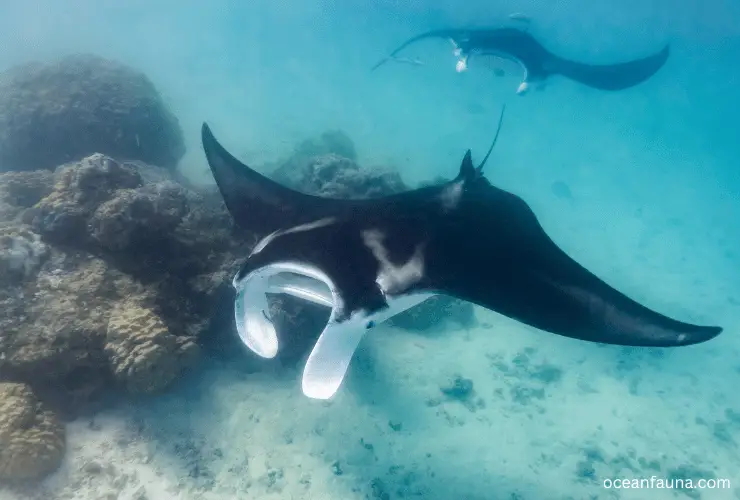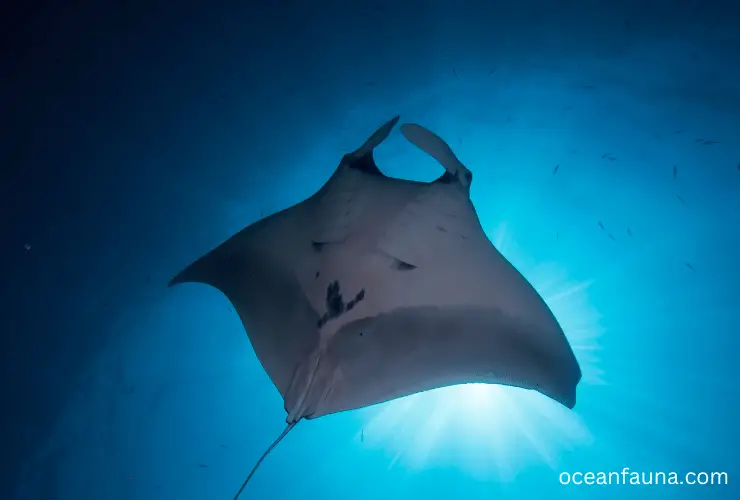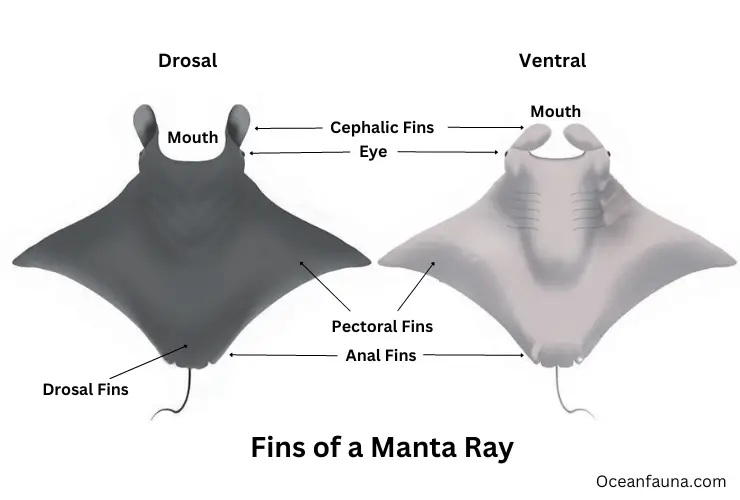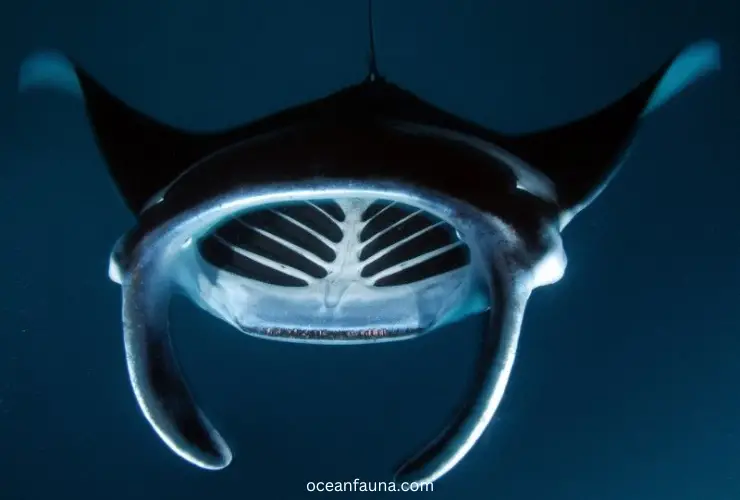No, manta rays do not have bones in their body. They have a skeleton that is made of a soft and flexible tissue called cartilage. Cartilage is the same tissue found in the tip of our noses. Their cartilaginous structure allows them to glide through the water gently.
Manta rays are not the only fish in the sea that are cartilaginous. Other fish with a skeleton made of cartilage include sharks, skates, rays, chimeras, and many others.
Now that we know such a fascinating fact about manta rays and some other fish. Let’s dive deeper and learn more about manta rays and their cartilaginous skeletons!
Is a Manta Ray a Chondrichthyes?
Chondrichthyes are a class of fish with skeletons made of cartilage, a type of connective tissue that is highly soft and flexible. There are two types of chondrichthyes which include Elasmobranchii and Holocephali. This is in contrast to the Osteichthyes, which have skeletons made of bone.
The answer is that manta rays are Chondrichthyes because they have cartilaginous skeletons. This is evident in their flexible bodies and lack of a swim bladder, a gas-filled organ that helps other fish maintain buoyancy. Manta rays are also closely related to sharks, which are also chondrichthyes.
Are Manta Rays Bony or Cartilaginous?

When people think of fish, they usually think of the bony skeleton most fish have in them. However, the truth is that there are two kinds of fish under the waters of the ocean. They are either bony or cartilaginous.
Manta rays are known for their massive size and enormous wings that are very flexible and help them glide gracefully in the water. This can only happen because their wings contain a very soft cartilage tissue skeleton. Hence, manta rays belong to the cartilaginous fish family and are the largest species of rays globally.
The Anatomy of Manta Rays
Manta rays have one of the most unique anatomy in the entire world. They are also the largest kind of rays. Let’s explore more about the anatomy of manta rays.
Diamond-shaped body

Firstly, the name ‘manta’ in Spanish literally means a cloak or blanket, which perfectly describes the diamond shape of a manta ray. They have some features that are similar to sharks, skates, and other rays due to their relationship with them. Manta rays have the largest brain-to-body ratio, with a brain the size of an adult human fist!
Giant manta rays have a wingspan that is about 22 feet long from one wingtip to the other and they can weigh up to 3000 pounds! Huge, aren’t they?
Tails and Stingers
Here’s another fun fact, manta rays have a small tail that just helps them swim around. It doesn’t have any stingers to sting you. However, if a manta ray ever loses its tail, it can even swim without its tail!
Even though manta rays belong to the ray and are very closely related to stingrays, they do not have stingers, teeth, or even barbs. Manta rays are completely harmless, and their only means of self-defense is their humongous size.
Mouths
They do have a set of teeth, but they are still completely harmless and never use their teeth to bite when they feel threatened; instead, they just swim away fast. Their mouth size is huge and is made up of gill arches and gill rakers, but they can’t swallow anything other than plankton.
Fins

Just like sharks, manta rays also have dorsal fins and they also swim in shallow waters. They use that fin to move around the ocean gracefully. So if you ever go to the beach and see a dorsal fin, it may not be a shark but a manta ray!
One of the most significant fins of manta rays is their cephalic fins, otherwise known as cephalic horns. Cephalic means related to the head, so these fins are attached to their heads in 2 positions.
They are unrolled or extended on their head to assist food getting into their mouths. Or, they are either rolled up when the fish is cruising around and not eating. These fins are known as cephalic horns and are extremely flexible.
FAQs
Is Manta Ray a Type of Shark?
No, a manta ray is certainly not a shark. However, this kind of ray is biologically related to sharks. They even have some of the same features, such as cartilaginous skeletons, dorsal fins, cephalic lobes, and even seven-gill slits!
How long is Manta Ray’s cartilage?
The length of Manta Ray’s cartilage depends on the following two variables:
- The size of the Manta Ray and
- The Age of Manta Ray
However, the average length of Manta Ray’s cartilage can be a few centimeters to several meters.
Note: The maximum length of a giant Manta Ray can be up to 9 meters or 30 feet.
Is Manta Ray’s cartilage edible?
Yes, the cartilage of a Manta Ray is edible, but you can’t consume it like food. In some cultures, it is evident that the cartilage of Manta Rays is often used as a traditional medicine or as an ingredient of specific dishes.
Warning: It is significant to note that eating cartilage from any marine animal can cause health risks. It may contain high levels of pollutants or toxins.
Wrapping Up
In short, manta rays are fascinating creatures with unique anatomy and swimming abilities. As cartilaginous fish, they have a skeleton made of soft and flexible cartilage, which allows them to glide gracefully through the ocean, just like sharks.
Being closely related to sharks leaves them having some very similar features other than being classified as Chondrichthyes. They have the same dorsal fins, gill slits, and cephalic lobes but are not as scary or dangerous as sharks tend to be.
Next time you see a dorsal fin at the beach, keep in mind it could also be a harmless manta ray coming to you!

